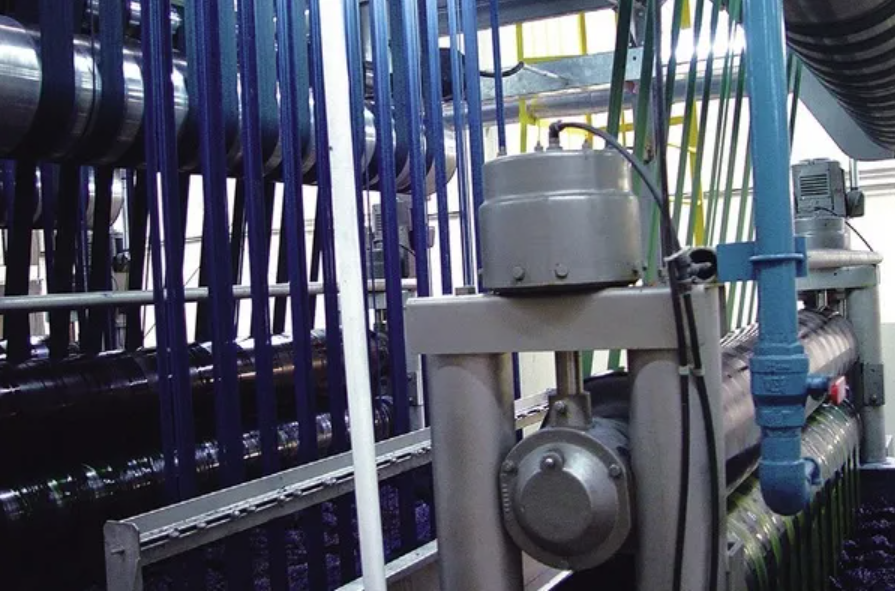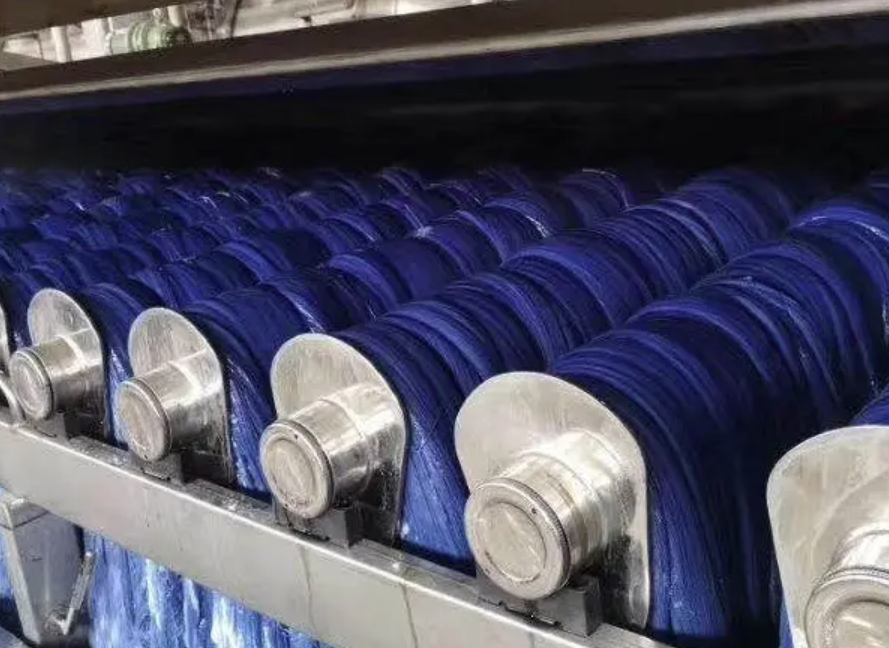Dyeing methods
There are three main ways in which materials are dyed; YARN DYE, PIECE DYE and GARMENT DYE.
YARN DYEING
Is the traditional way to dye denim as it provides the ability to weave indigo dyed yarns (warp) with natural ecru yarns (weft), creating the characteristic look which denim is known for. This can be a more expensive dyeing method and depending on technique can result in different colour strength and fastness.
WARP
Lengthways vertical yarns carried over and under the weft, which are also known as ends.
WEFT
Run widthways, selvedge to selvedge horizontally, also known as filling yarns.
In denim the yarns are most commonly woven as a twill weave. Ecru weft yarns pass over one indigo warp yarn and then under two or three indigo warp yarns. This weave creates an indigo face and an ecru reverse.
ROPE DYEING
The oldest denim yarn dyeing method invented around 1915. The process is almost unique to denim and the most popular method.
Yarns are twisted into rope forms. Before dyeing they are put through caustic soda and wetting agents to remove impurities in the yarn. This also opens the fibres to allow the dye to absorb into the yarn as much as possible. These ropes undergo a sequence of dipping and oxidation into a series of vats (boxes of liquid dye). The number of dips will determine how dark the indigo shade is. After, the ropes are washed, dried and separated ready to be woven into fabric.
Good penetration of dye into the yarn giving good colour fastness
Lower concentration of dye is needed
More even and stable colour
High productivity
Slow production and therefore expensive
Requires more space for machinery
Less flexible when changing colour
SLASHER DYEING
Introduced in the 1970s, this process is a continuous process which combines dyeing and sizing in a single operation.
Instead of having the yarns bundled into ropes, they are laid out as a sheet. The yarns are passed continuously through multiple warp beams and several baths of indigo dye before being sized and wound in preparation for weaving. Sizing is to clean the yarns to avoid cracks and streaks in the finished fabric. With this method, yarns spend less time immersed in the dye baths and less time in oxidisation because more surface area of the yarn is exposed.
Faster dyeing method
Uses less energy
Lower production minimums
More flexible when changing colour
Requires less space
Typically less even and uniform in colour with side to side variation
Penetration of dye stuff can be poorer
HANK DYEING
A time consuming dye method which achieves maximum colour penetration whilst maintaining a soft handfeel.
Skeins of yarns are placed on hooks and washed. The washing is to loosen the fibres so they can easily absorb the dye. It is then dipped into the dye for up to forty-eight hours, washed, and re-dipped. This procedure is repeated several times until the desired colour is achieved. After which the yarn is steamed to fix the dye stuff. This method uses less chemicals to the others, meaning it is less damaging to the yarns and end material.
Maximum colour penetration
Colour is richer than other techniques
Yarn remains soft
Less damage to the yarn
Expensive
Time consuming
PIECE DYE
Known as fabric dyeing; greige (natural, undyed) fabric is dyed after weaving. Very common for coloured fabrics, often leading to strong colour and stable colourfastness as typically reactive dyed.
GARMENT DYE
Garments are made from greige fabric and only dyed once stitched together. This method can create a more faded and authentic look, however can result in poor colour fastness performance.






